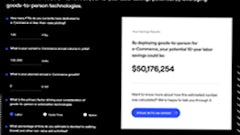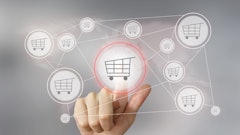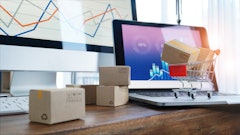Call it what you will—whether a transformation, a technological shift or the end-result of business platform fusion—if enterprise resource planning (ERP) platforms don’t respond proactively to consumer and market pressures to become more intelligent, user-friendly, cost-efficient, intuitive and even mobile, they will become extinct. Yes, extinct.
But don’t take my word for it—just take a look at some of the other ERP coverage that’s out there. Sure, ERP implementations will continue and rightly so as they do offer their fair share of benefits in handling numerous business processes together—including transactions, sales orders, inventory shipments, invoicing, financial transaction and other processes for procurement and manufacturing. But they must adhere to the new ERP users that make up our industry today.
“In the past, ERP systems were typical the transactional system,” confirmed Jack Payne, Vice President, Enterprise Software, CDC Software, Atlanta. “And if you look back at how ERP systems developed in the 90s’ and early 2000s’ they were being used by people who didn’t grow up with computers or a smartphone in their hand. Today’s user is a different user. They expect more out of their ERP system.”
We all know that a technological component (such as a cell phone, DVD player, TV, etc.) that a consumer may have had last month will be replaced by next month’s latest and greatest. And the same sort of concept can be applied to the supply chain, an industry greatly made up of software solutions to help businesses drive growth from the bottom up, reduce their carbon footprint, increase efficiency and productivity while cutting costs and effectively managing risk—all at the same time. But today, it’s not just about the ERP platform anymore.
“It’s a different generation user out there today using current ERP systems,” continued Payne. “They’re not expecting ERP systems to be classified, dumb systems. They don’t expect to turn the system on in the morning and have it sit there and look back at them until they ask it to do something. When was the last time you or I had bought a piece of consumer software or downloaded an app and read the instruction manual before doing so? We haven’t. Today’s user is expecting the ERP system to provide them with information—to update and alert them and be easy to use and navigate. That is what they are looking for and is part of the challenge today—taking an ERP platform that is robust and is feature-rich but will work for that new user.”
One way that ERP platforms of today are changing their ways to meet current consumer demand is through the use of mobility. One of the barriers synonymous with traditional ERP platforms of the past is that they forced users to be tied to their workstations and desks. On the contrary, recent ERP platforms of today offer added integrated capabilities that not only allow users to access their databases via the cloud but on the go as well.
For example, CDC Software’s Pivotal CRM new mobile application utilizes the entire screen of the iPad to offer users intuitive features to implement their business processes at their fingertips. Information displayed in the dashboard can include charts, Web pages and search result lists.
“The new user is no longer tied to their desks at all times,” added Payne. “They have a smartphone or an iPad or tablet in their hands at all times. So what we are doing is providing information to the iPhone, IOS platform and Android platform to provide that business connectivity. And informed consumers are going to be looking for that capability in the ERP platforms of today,” he concluded.
Tell us—what’s your take on the future of ERP? Let’s keep the discussion going.
Note: Vista Equity Partners’ acquisition of CDC Software was completed in April. CDC Software is now a standalone company operating independently of CDC Corp.

























